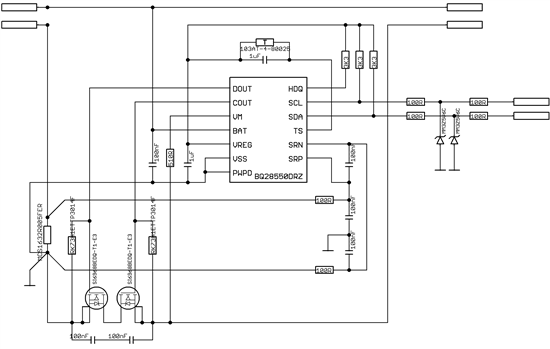We are trying to establish I2C communication with the bq28550 Battery Gas Gauge and have been having some trouble. I'm personally new to using I2C, but I'm using some modules that we have used in the past to successfully communicate with other I2C platforms. I have several questions:
1. We have been unable to get the bq28550 to acknowledge a 'Quick Command' message, of the format: [Start] -> [Address] -> [R/W] -> [ACK] -> [STOP]. As a newcomer to I2C, I'd like to verify that the correct way to address the bq28550 (address = 0x16) followed by a 'Write' bit would be of the format:
[Start] -> 0-0-1-0-1-1-0 -> 0
and that this should be followed immediately by the bq28550 pulling the SDA line low in acknowledgement of being addressed. Please let me know if this is the correct addressing scheme for this device.
2. We have replicated the Reference Schematic in the bq28550 Datasheet, with 3.3k resistors pulling up the SDA and SCL lines to VReg (2.5V) and 100R resistors in series with the bus going out of the board. Our I2C module acting as the master uses a 2.8V supply pulling up the SDA and SCL lines through 10k resistors and no series resistors. As best as I can tell, this would not negate successful transmission, but please let me know if this is wrong.
As far as I can tell from the SMBus specifications, all of our timing and voltage levels on the bus lines are acceptable. Please let me know if these or any other common problems could be impeding us. Thank you.


